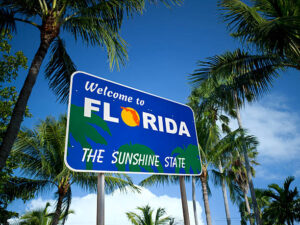
To support recovery efforts, the federal government has rolled out tax relief measures for certain counties in Florida.
These counties include: Alachua, Bay, Bradford, Calhoun, Charlotte, Citrus, Collier, Columbia, Dixie, Escambia, Franklin, Gadsden, Gilchrist, Gulf, Hamilton, Hernando, Hillsborough, Holmes, Jackson, Jefferson, Lafayette, Lee, Leon, Levy, Liberty, Madison, Manatee, Marion, Monroe, Okaloosa, Pasco, Pinellas, Santa Rosa, Sarasota, Sumter, Suwannee, Taylor, Union, Wakulla, Walton, and Washington.
Read along to find out how this relief may affect you, your business owner clients and their participants.
Visit the IRS website to see disaster relief listed by state.
Additional relief may be available to affected taxpayers who participate in a retirement plan or individual retirement arrangement (IRA). See below for which provisions to look for within your plan document as well as a breakdown of what these provisions mean.
Hardship Distributions
If you live or work in a designated area and have incurred expenses and losses because of a FEMA-declared disaster you may be eligible for individual disaster assistance through a hardship withdrawal from your retirement account. Verify your eligibility at fema.gov/locations.
If you live in a disaster area and have suffered financial losses, you might be able to take out up to $22,000 from certain retirement accounts without facing a penalty. Here’s what you need to know:
You can withdraw from various plans including a qualified pension, profit-sharing, or stock bonus plan (including a 401(k) plan), qualified annuity plan, tax-sheltered annuity contract, governmental 457 deferred compensation plan, Traditional IRA, SEP plan, SIMPLE plan, Roth IRA, or the federal Thrift Savings Plan if requirements are met.
You can choose to pay back the amount you withdrew within three years.
Recontribution of Home Purchase Distributions
If you took money out of your 401(k), 403(b), or IRA for a home purchase or construction, you may be able to put that money back into a retirement account if certain conditions are met:
The distribution must have occurred between 180 days before the start of the incident period and 30 days after the end of that period.
You must recontribute the money between the start of the incident period and 180 days after either the start of the incident period or the declaration date.
The funds must have been intended for buying or building a primary residence but were not used due to the disaster.
You can put the money back into various retirement plans, including 401(k) plans, IRAs, and other qualified pension plans.
Employer Plan Loan Relief
If your employer’s retirement plan allows loans, you might be able to borrow money under certain conditions:
Review the IRS’s disaster relief FAQs and Form 8915-F for more details on Qualified Disaster Retirement Plan Distributions. Consult a tax advisor to understand how these options can benefit or vary by your situation.
Your retirement plan questions answered, in plain English, by an expert. Use the form below to ask our retirement plan experts your question.